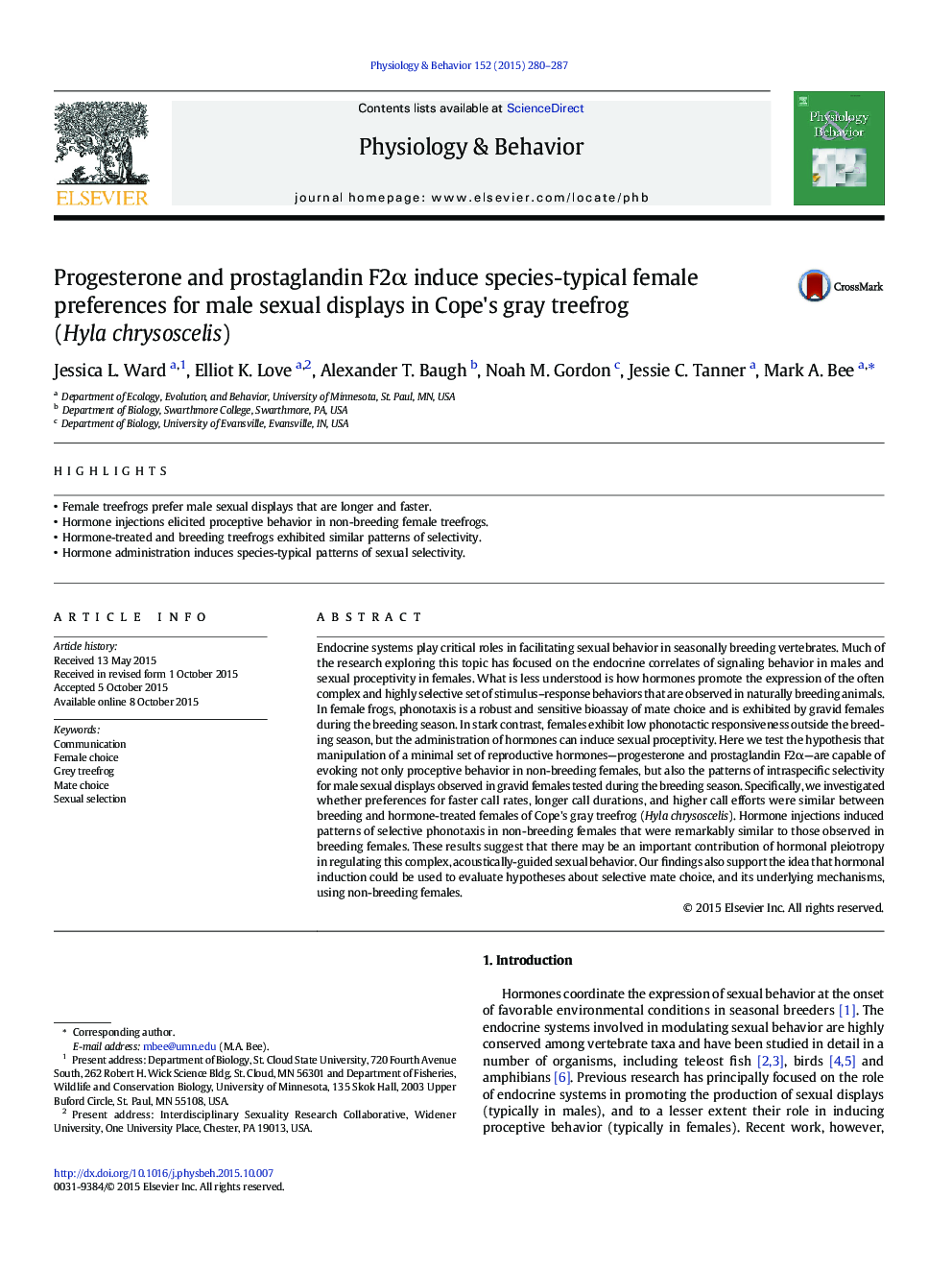| کد مقاله | کد نشریه | سال انتشار | مقاله انگلیسی | نسخه تمام متن |
|---|---|---|---|---|
| 5923099 | 1166292 | 2015 | 8 صفحه PDF | دانلود رایگان |

- Female treefrogs prefer male sexual displays that are longer and faster.
- Hormone injections elicited proceptive behavior in non-breeding female treefrogs.
- Hormone-treated and breeding treefrogs exhibited similar patterns of selectivity.
- Hormone administration induces species-typical patterns of sexual selectivity.
Endocrine systems play critical roles in facilitating sexual behavior in seasonally breeding vertebrates. Much of the research exploring this topic has focused on the endocrine correlates of signaling behavior in males and sexual proceptivity in females. What is less understood is how hormones promote the expression of the often complex and highly selective set of stimulus-response behaviors that are observed in naturally breeding animals. In female frogs, phonotaxis is a robust and sensitive bioassay of mate choice and is exhibited by gravid females during the breeding season. In stark contrast, females exhibit low phonotactic responsiveness outside the breeding season, but the administration of hormones can induce sexual proceptivity. Here we test the hypothesis that manipulation of a minimal set of reproductive hormones-progesterone and prostaglandin F2α-are capable of evoking not only proceptive behavior in non-breeding females, but also the patterns of intraspecific selectivity for male sexual displays observed in gravid females tested during the breeding season. Specifically, we investigated whether preferences for faster call rates, longer call durations, and higher call efforts were similar between breeding and hormone-treated females of Cope's gray treefrog (Hyla chrysoscelis). Hormone injections induced patterns of selective phonotaxis in non-breeding females that were remarkably similar to those observed in breeding females. These results suggest that there may be an important contribution of hormonal pleiotropy in regulating this complex, acoustically-guided sexual behavior. Our findings also support the idea that hormonal induction could be used to evaluate hypotheses about selective mate choice, and its underlying mechanisms, using non-breeding females.
Journal: Physiology & Behavior - Volume 152, Part A, 1 December 2015, Pages 280-287